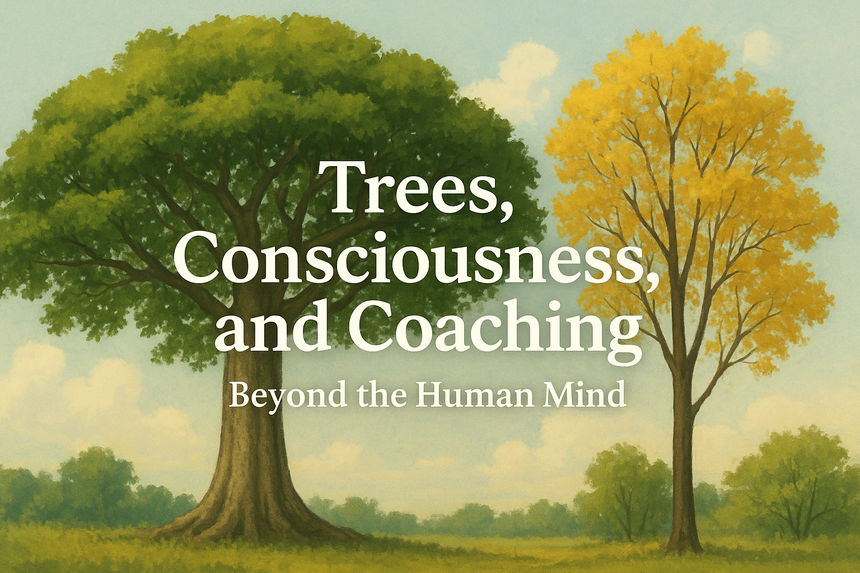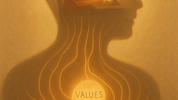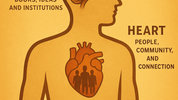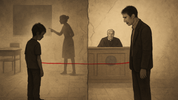Do Trees Sense Eclipses?
A recent article claimed that spruce trees in the Alps anticipated a solar eclipse by aligning their bioelectrical signals. It’s a captivating image — a forest whispering to itself about the shadow to come.
But when scientists looked closer, the study fell apart: too few trees measured, too many uncontrolled variables, and speculative conclusions that outpaced the evidence.
Still, the story lingers. Why? Because it brushes up against a question bigger than the experiment itself: what is consciousness, and where does it begin or end?
Science and the Challenge of Defining Consciousness
Traditionally, scientists define consciousness through observable criteria:
- Can an organism learn?
- Does it show memory or goal-directed behaviour?
- Is there a nervous system that maps and integrates experiences?
For humans and many animals, the answer is clear enough. But for plants — or even edge cases in humans — the model begins to strain.
Take near-death experiences (NDEs). Thousands of people, declared clinically dead (no heartbeat, no measurable brain activity), later reported vivid perceptions of their surroundings. Some even described events that independent witnesses confirmed.
If consciousness disappears when brain activity ceases, how can these accounts exist?
Such stories suggest that our standard definitions may be missing something essential.
Alternative Models of Consciousness
To bridge these gaps, some thinkers have proposed alternative models:
- Integrated Information Theory (IIT): Consciousness arises from the degree of information integration within a system. Even systems without brains (plants, AI networks) might hold a minimal form of awareness if they integrate information in complex ways.
- Panpsychism: Consciousness is not limited to brains or living bodies, but is a fundamental property of matter, like gravity or electromagnetism. Everything, in this view, has some degree of awareness, however small.
- The Filter Theory: The brain doesn’t produce consciousness but filters or tunes into it, like a radio receiving signals already in the air. This aligns with interpretations of NDEs, where awareness seems to persist without measurable brain activity.
These models are debated, speculative, and unproven. But they share something important: they keep the question open.
Indigenous Perspectives: Trees as Family
Long before modern science, Indigenous traditions around the world held that trees were not passive matter but living relatives:
- The Māori of New Zealand see trees as ancestors, bound through whakapapa, the genealogical web that connects humans, rivers, mountains, and forests as kin.
- The Mayan Ceiba tree serves as a world tree, connecting underworld, earth, and heavens, a cosmic axis linking all realms.
- Among the Lakota, the cottonwood tree is central to the Sun Dance ceremony, its branches carrying prayers to the Great Spirit.
- The Mapuche of Chile call themselves Pewenche, “people of the monkey puzzle tree,” embodying kinship with the Araucaria tree.
These traditions don’t ask whether trees are “conscious” in the scientific sense. They begin from a different premise: that trees are participants in life’s web, with presence, agency, and spirit.
What If Consciousness Is Broader?
If science is cautious, and Indigenous traditions are relational, where does that leave us?
Perhaps the more fruitful question is not “Do trees have consciousness like humans?” but:
“What if consciousness is not a possession at all, but a field we participate in?”
What if our own awareness is not the boundary, but just one expression of something more vast?
A Coaching Perspective
For those of us in coaching and personal development, this isn’t an abstract debate.
If consciousness extends beyond the human mind, then the very questions we ask — of ourselves, our clients, and the world — shift. Coaching becomes not just about exploring the inner landscape of thought and feeling, but about listening for deeper signals: the body, the environment, and perhaps even the wider field of life itself.
Reflective Questions
Instead of rushing for an answer, pause with the questions:
- When in your life have you felt most vividly alive and aware, and what does that tell you about what consciousness means to you?
- What if the natural world were listening to you as much as you are to it? How might that change the way you walk through it?
- How do your own moments of awe, wonder, or mystery hint at a consciousness bigger than the self?
- And perhaps the most radical: what becomes possible when we stop asking whether something is conscious, and start asking how we might listen differently?
Closing Thought
Science reminds us to be rigorous. Indigenous wisdom reminds us to be humble. Philosophy reminds us to stay curious.
And maybe that’s the point. Consciousness, whether in humans, trees, or the cosmos, is not a riddle to be solved, but a relationship to be deepened.
What if listening itself, to trees, to silence, to mystery, is a doorway into consciousness beyond the self?
Further Reading
- Royal Society Open Science: Original Study on Tree Bioelectrical Signals
- Debunking Speculative Claims in Tree Consciousness (ResearchGate)
- David Chalmers on the “Hard Problem of Consciousness”
- Integrated Information Theory (IIT) Primer
- Robin Wall Kimmerer, Braiding Sweetgrass — a beautiful exploration of Indigenous wisdom, science and plant life.
 unknownx500
unknownx500





